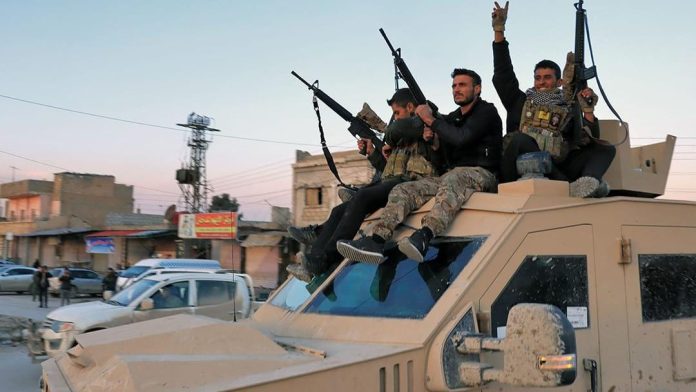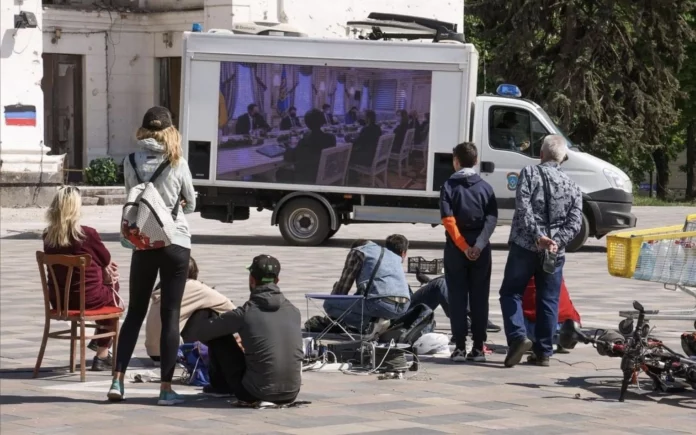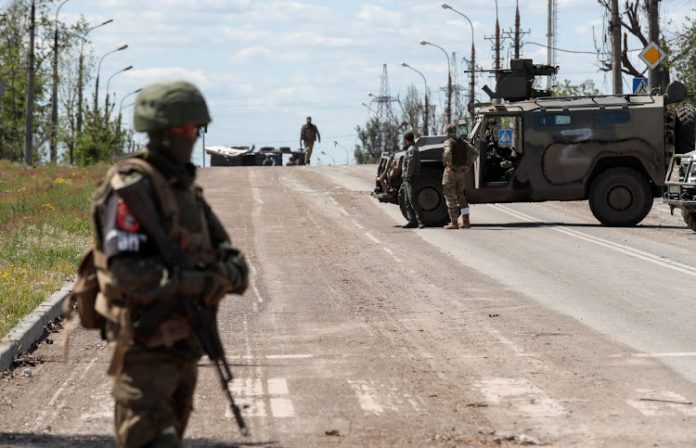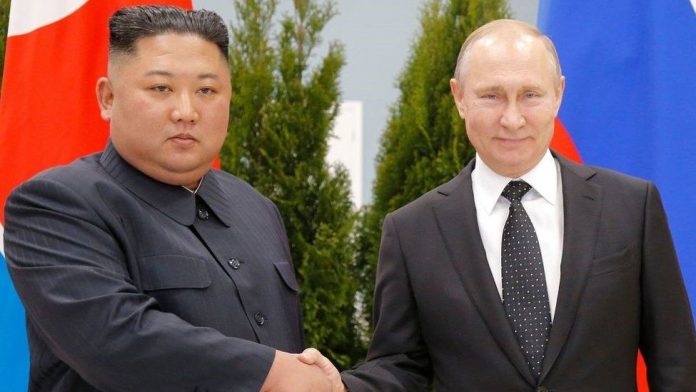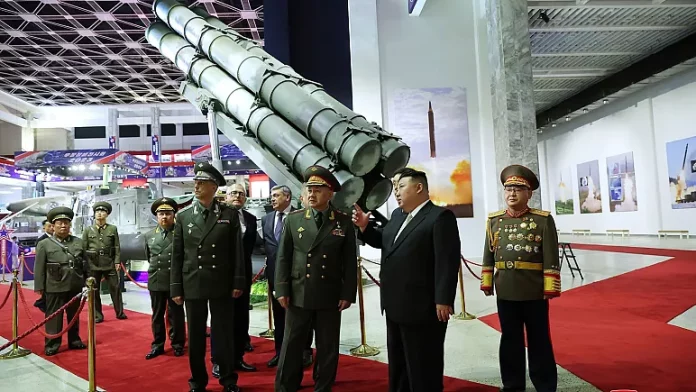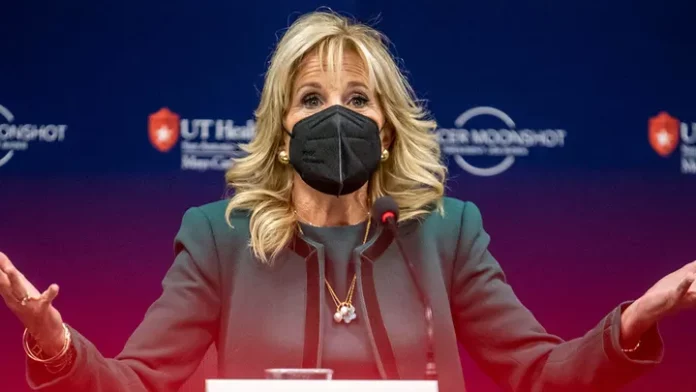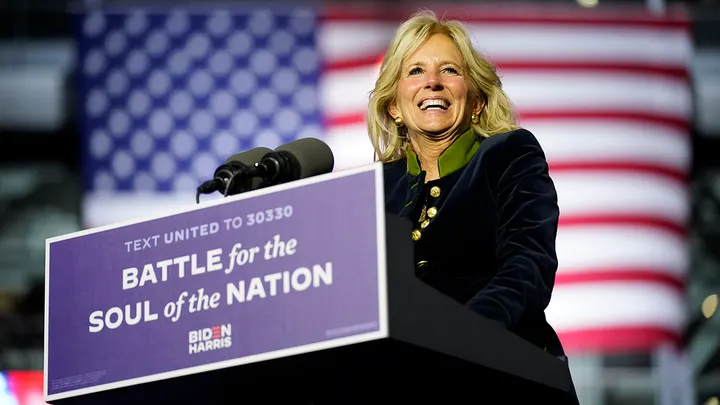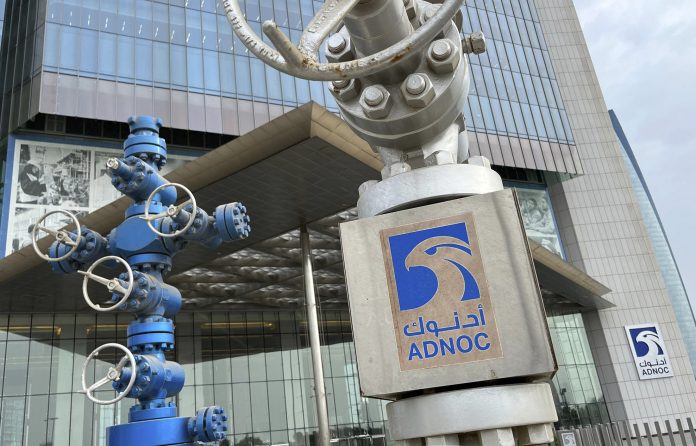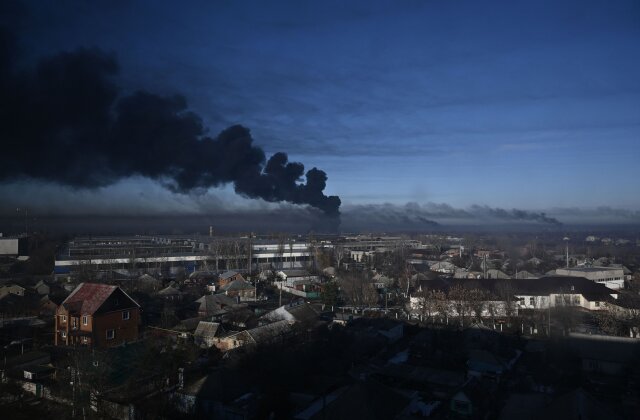BEIRUT – The recent weeklong clashes between rival U.S.-backed militias in eastern Syria, where hundreds of American troops are stationed, highlight the growing fissures within the coalition that has maintained stability in the region since the defeat of the Islamic State group. This situation poses a potential opportunity for the reemergence of the radical group.
Additionally, the violence underscores the escalating tensions between the dominant Kurdish population in the area and the predominantly Arab residents, creating an opening for Syrian President Bashar Assad and his allies, Russia and Iran, to expand their influence in this oil-rich territory. They aim to displace U.S. troops and reinstate Damascus’ authority.
Eastern Syria has remained largely under the global radar, particularly in the United States, where approximately 900 troops and an unspecified number of contractors have been stationed since the defeat of the Islamic State group in 2019. These troops have worked alongside the Syrian Democratic Forces, a coalition of militias primarily led by Kurdish fighters.
Simultaneously, a U.S.-supported Kurdish-led administration has governed parts of northern Syria and the majority of Syria east of the Euphrates River, including crucial oil fields. On the western bank of the river, government forces and Iranian-backed militias have positioned themselves. The Arab population in the region holds roles in both the Syrian Democratic Forces and the administration but has long harbored resentment toward Kurdish control.
The clashes have involved the Syrian Democratic Forces and their allied faction, the Arab-led Deir el-Zour Military Council. The catalyst was the arrest of the council’s commander, Ahmad Khbeil, also known as Abu Khawla, by the SDF on August 27. The SDF accused Khbeil of criminal activities, corruption, and establishing contacts with the Damascus government and Iranian-backed militias.
Also Read: Breaking News: Kim Jong Un and Putin’s Secret Meeting Plans
Fighting erupted between the SDF and Khbeil’s loyalists, who were subsequently joined by hundreds of Arab tribesmen, resulting in battles that spread and left the tribesmen in control of several villages outside the city of Deir el-Zour. The clashes have led to at least 90 fatalities and dozens of injuries.
Kurdish leaders accuse Iranian-backed militias and the Syrian government of instigating the violence. SDF spokesman Farhad Shami, in a statement to The Associated Press, refuted claims that local Arab fighters were involved in the clashes, asserting that it was fighters loyal to Damascus who crossed the river.
Elham Ahmad, the leader of the Syrian Democratic Council, the political arm of the SDF, expressed, “Iran and the Assad regime want to depict this unrest as a result of an ethnic conflict between Arabs and Kurds,” with their ultimate aim being the expulsion of U.S. troops.
However, some observers caution that the violence reflects the local Arab population’s resentment of Kurdish dominance. Opposition activists have indicated that efforts are underway to negotiate a ceasefire with tribal leaders.
Omar Abu Layla, a Europe-based activist who heads the Deir Ezzor 24 media outlet covering news in the region, stated, “This is an unprecedented escalation between SDF and Deir el-Zour residents,” and attributed it to the SDF’s flawed policy and misjudgment by the Americans. He suggested a potential solution might involve appointing a replacement for Khbeil and granting Arabs more influence in local councils.
If the conflict persists, it could further deepen the divide between Kurds and Arabs, potentially creating an opening for remnants of the Islamic State to attempt a resurgence.
The U.S. military has called for an end to the fighting, emphasizing that “distractions (from opposing IS) create instability and increase the risk of Daesh resurgence,” using the Arabic acronym for the Islamic State group.
Over the weekend, a meeting took place involving SDF figures, tribal leaders, and U.S. officials, including Maj. Gen. Joel Vowell, the commander of Operation Inherent Resolve, responsible for U.S. military operations against IS, as announced by the U.S. Embassy. They collectively recognized the importance of addressing grievances among Deir el-Zour residents, preventing civilian casualties, and prioritizing de-escalation.
The SDF continued its offensive over the weekend, capturing two villages and encircling the primary stronghold of Arab tribesmen in Diban. SDF chief commander Mazloum Abdi acknowledged local aerial support during the offensive, although the U.S. military did not confirm or deny this when contacted by The Associated Press.
The Islamic State once controlled significant portions of Iraq and Syria but was defeated following an extensive and arduous campaign led by the U.S. and its allies, including the SDF. Despite its territorial losses in 2019, remnants of the group have continued to conduct sporadic low-level attacks in the region, resulting in numerous casualties over the years.
Myles B. Caggins III, a senior fellow at the New Lines Institute, asserted that these clashes “present an opportunity for ISIS cells that nest in the Euphrates River Valley to emerge.”
The ongoing violence also provides a window of opportunity for Damascus and Iran to advocate for the departure of American forces. Khaled al-Hassan, the commander of the pro-government Baqir Brigade militia, characterized the violence as “a new uprising by Syrians against the American occupation and its militias,” referring to the SDF.
During a recent visit to Iran, Syrian Foreign Minister Faisal Mekdad warned that “American occupation forces should withdraw … before they are forced to do so.”
In mid-July, dozens of Arab tribesmen and members of the pro-government National Defense Forces held a rally in Deir el-Zour province attended by a Russian general. An NDF commander declared, “The end of American forces will be at the hands of Arab tribesmen who stand behind the Syrian army.”
In March, a suspected drone attack with ties to Iran targeted a U.S. base, resulting in the death of a contractor and injuries to another, along with five American troops. American warplanes subsequently launched airstrikes on sites used by groups affiliated with Iran’s Revolutionary Guard. President Joe Biden emphasized that the U.S. would respond “forcefully” to protect its personnel.
A report released by The Institute for the Study of War, a Washington think tank, highlighted that “Iran, Russia, and the Syrian regime have a shared interest in the departure of U.S. forces from Syria.”
Last week’s clashes occurred after Lebanese and Arab media outlets, reflecting Iran’s perspective, claimed that the Americans intended to sever the land corridor connecting Iran to the Mediterranean Sea by capturing the strategic border town of Boukamal.
The coalition’s commanding general, U.S. Maj. Gen. Matthew McFarlane, denied these reports, stating, “The coalition is not preparing for military operations to cut off anybody except Daesh.”
Nevertheless, Iran and its allies view any attempt to close the Iraq-Syria border as a red line, with Syrian political analyst Bassam Abu Abdullah warning that “closing the gate between Damascus and Baghdad” would be seen as a “declaration of war.” These comments typically align with the government’s viewpoint.


